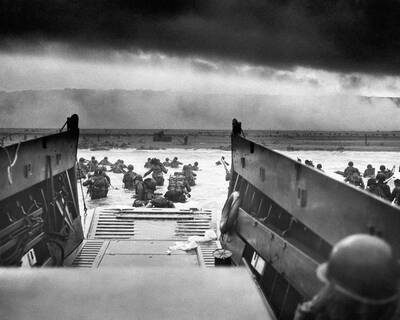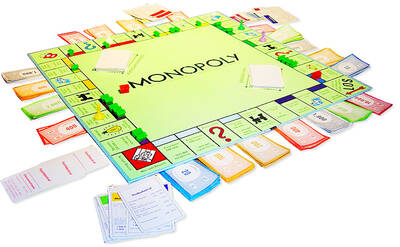Nothing remotely links the Florentine Renaissance busts of Baccio Bandinelli with the minimalist paintings and sculptures of present-day Turin artist Gianni Piacentino.
But by an “art coincidence” the work of both men, albeit with a 450-year gap in between, is currently attracting public attention in Berlin.
Since July of last year the Bode Museum has been prominently featuring in its Florentine Renaissance Hall the Bust of a Young Man by sculptor Bandinelli (1493-1560).
Art critic Klaus Grimberg, writing in the German Times, quotes one visitor as saying: “If Nefertiti is the most beautiful woman in Berlin’s museums, then this youth is the most beautiful man.”
Critics took another view of Bandinelli’s work during his lifetime. His art was often scorned and he was mocked as the “eternal runner-up” to Michelangelo (1475-1564).
His Hercules and Cacus on the Piazza della Signorina in Florence was even seen as “symbolizing his inadequacies as a sculptor.”
But today it’s different. The Bust of a Young Man is hailed by art connoisseurs as a heroic portrait of “classical beauty and melancholic tranquility.”
German museums liked it so much they bought it for an undisclosed sum from a London art dealer after a weak US dollar and the financial crisis drove its price down.
Not far from the Bode Museum, the work of Gianni Piacentino, a modern-day artist-sculptor, has also been pulling in the crowds at the unusually named El Sourdog Hex Gallery.
Located near the Checkpoint Charlie Museum documenting Berlin Wall escapes, the gallery is a brainchild of Reinhard Onnasch, a millionaire property dealer.
Onnasch uses the premises to display his huge private collection of paintings and sculptures assembled over the past 40 years.
Hundreds of works by artists such as George Brecht, Bernd Koberling, Kenneth Noland, Jason Rhodes and Claes Oldenburg have been shown over the past two years. Now it’s Piacentino’s turn.
Long a prominent figure on the Italian scene, the artist lives and works in Turin. Like others in the “arte povera” group, with whom he exhibited in the late 1960s, Piacentino began his career with a kind of homegrown minimalism that swiftly grew more richly metaphorical and suggestive.
Soon he was integrating his “other career” as a sidecar motorcycle racer and custom motorcycle painter into his art — by creating sleek, semi-abstract and elongated versions of racing cars, airplanes and motorcycles.
It is this element of Piacentino’s work that is now being spotlighted in a show titled Homage to the Wright Brothers.
Art critics argue that by defying prevailing currents, Piacentino arrived at certain artistic issues ahead of the crowd, and stayed on to “more deeply explore some of them long after the crowd had moved on.”
Property dealer Onnasch first began exhibiting “artists of my generation” in Berlin in the late 1960s, and later opened galleries in Cologne and New York.
The Piacentino exhibition, inaugurated on Nov. 10, runs until Dec. 27.

Taiwan is one of the world’s greatest per-capita consumers of seafood. Whereas the average human is thought to eat around 20kg of seafood per year, each Taiwanese gets through 27kg to 35kg of ocean delicacies annually, depending on which source you find most credible. Given the ubiquity of dishes like oyster omelet (蚵仔煎) and milkfish soup (虱目魚湯), the higher estimate may well be correct. By global standards, let alone local consumption patterns, I’m not much of a seafood fan. It’s not just a matter of taste, although that’s part of it. What I’ve read about the environmental impact of the

It is jarring how differently Taiwan’s politics is portrayed in the international press compared to the local Chinese-language press. Viewed from abroad, Taiwan is seen as a geopolitical hotspot, or “The Most Dangerous Place on Earth,” as the Economist once blazoned across their cover. Meanwhile, tasked with facing down those existential threats, Taiwan’s leaders are dying their hair pink. These include former president Tsai Ing-wen (蔡英文), Vice President Hsiao Bi-khim (蕭美琴) and Kaohsiung Mayor Chen Chi-mai (陳其邁), among others. They are demonstrating what big fans they are of South Korean K-pop sensations Blackpink ahead of their concerts this weekend in Kaohsiung.

The captain of the giant Royal Navy battleship called his officers together to give them a first morsel of one of World War II’s most closely guarded secrets: Prepare yourselves, he said, for “an extremely important task.” “Speculations abound,” one of the officers wrote in his diary that day — June 2, 1944. “Some say a second front, some say we are to escort the Soviets, or doing something else around Iceland. No one is allowed ashore.” The secret was D-Day — the June 6, 1944, invasion of Nazi-occupied France with the world’s largest-ever sea, land and air armada. It punctured Adolf

The first Monopoly set I ever owned was the one everyone had — the classic edition with Mr Monopoly on the box. I bought it as a souvenir on holiday in my 30s. Twenty-five years later, I’ve got thousands of boxes stacked away in a warehouse, four Guinness World Records and have made several TV appearances. When Guinness visited my warehouse last year, they spent a whole day counting my collection. By the end, they confirmed I had 4,379 different sets. That was the fourth time I’d broken the record. There are many variants of Monopoly, and countries and businesses are constantly